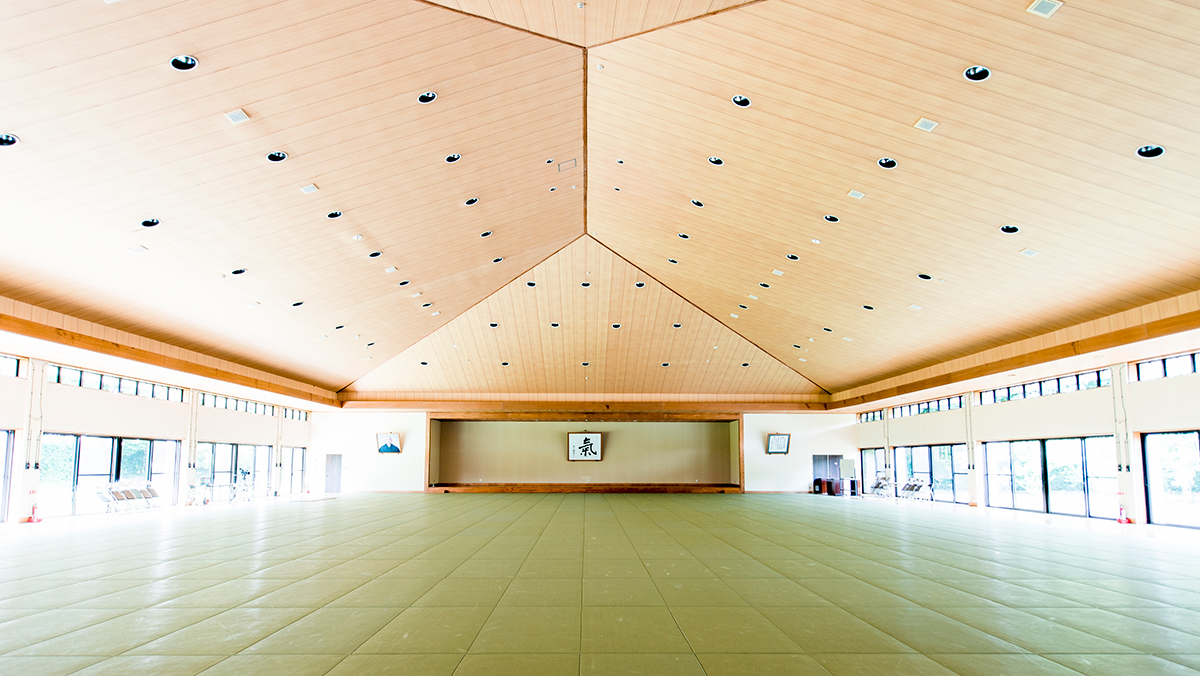The Shinshin Toitsu Aikidokai has 24 federations / chapters throughout the world and about 30,000 members are training.
One such federation, the Oregon Ki Society, has been very active in practicing and teaching Kiatsuhō, along with other Shinshin Toitsu Aikido programs.
Kiatsuhō is a health regimen based on Shinshin Toitsu Aikido, where a practitioner, while their ki is naturally extending, touches patients to help them relax and have better blood circulation, which improves various ailments. Pain is eased and stiffened body parts become more supple. To put it simply, Kiatsuhō is an important health regimen to help dissolve the blockage of Ki that causes various health problems. It is one of the important disciplines we have in Shinshin Toitsu Aikido.
Over a period of several years, Calvin Tabata Sensei (Shinshin Toitsu Aikido 8th degreeblack belt) and his core dojo members studied Kiatsuhō directly from Koichi Tohei Sensei. They became the only federation allowed to open a Kiatsuhō school in Oregon.
Many members study Kiatsuhō in addition to Shinshin Toitsu Aikido.
Recently, instructor and physician Terry Copperman and other co-researchers conducted a clinical study on Kiatsuhō, and published their findings in a medical journal.
This academic journal is given a rating called Impact Factor (IF). IF of 3 or greater is generally considered to be a reliable journal. Here is the article:
Beneficial Effects of Kiatsu with Ki Training on Episodic Migraine
Although I have some background in science, reading and understanding a medical journal article is quite difficult. So I asked for help from Takeshi Tanigawa, M.D., Ph.D., Professor of Graduate School of Medicine and Chair of Department of Public Health at Juntendo University, to explain this journal article.
Tanigawa Sensei is an enthusiastic Shinshin Toitsu Aikido practitioner. “Kiatsuhō is going to be a historical step that will cut into existing alternative medicines. [This study] has a great significance in that it conducted experiments based on the strict and demonstrative methodologies of Western medicine, and successfully demonstrated the positive efficacies of Kiatsuhō.” Tanigawa Sensei explained.
This article mainly talks about migraine headaches.
And according to Tanigawa Sensei, migraine headaches have a high rate of prevalence around the world, and drug therapies
come with side effects. Existing alternative therapies also have limitations, such as high cost, and clinics who provide those therapies are limited in number.
Kiatsuhō was demonstrated to be a promising approach. It provided sustained efficacies to female subjects with migraine headaches by significantly reducing the frequency, improving QoL (Quality of Life) scores, and reducing the need for medication use.
Of particular importance, the effectiveness of Kiatsuhō increases when combined with Ki training (Shinshin Toitsu Aikido) rather than performing Kiatsuhō alone.
It turned out that migraine symptoms improved by Kiatsuhō can be sustained by continuing Ki training. Tanigawa Sensei, who specializes in Public Health, took particular note of this point.
This clinical study was accomplished by the local instructors’ passion to spread Kiatsuhō and Ki training to the world.
In collaboration with Tanigawa sensei, we have decided to advance our research in Japan too. We have many years of experience with Kiatsuhō in Japan, and my desire is to demonstrate the effectiveness of Kiatsuhō and Ki training. So in the near future, we will begin recruiting people with a graduate degree (or bachelor degree) to get involved in these studies. Along with Shinshin Toitsu Aikido, we will spread Kiatsuhō to the world.
Translated by Mayumi Case
Edited by David Shaner and Matthew Attarian
Eastern Ki Federation
https://easternkifederation.org/
Original article in Japanese: 氣圧法の研究論文について
June 1, 2022
http://www.shinichitohei.com/japanese/2022/09/post-d0d275.html

